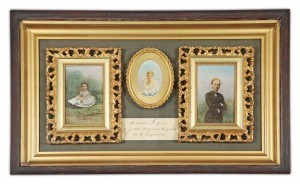Heath Hardage Lee's Blog
April 9, 2014
Winnie Wednesday Book Reviews!
Hi all! Fresh off the presses, two great Winnie book reviews! See below! More to come…
Also make sure to listen to the recent podcast on Winnie which you can click on and listen to at the bottom of my website under “Press.”
Thanks! :)
Review by Guy Gugliotta, author of Freedom’s Cap: The United States Capitol and the Coming of the Civil War: (Review from April 4, 2014):
“Daughter of the Lost Cause is the poignant story of Winnie Davis, one of the last casualties of the Civil War. Destined by birth to carry the torch of the Confederacy, it was an obligation she never asked for but could never refuse. Heath Lee tells this tale with simple elegance and matter-of-fact sensitivity. She makes you understand that neither of Winnie’s two worlds–the languor of the Mississippi Gulf Coast or the hustle of downtown New York–would ever bring her peace.”
Review: Booklist: (Review from April 4, 2014):
Born in 1864 during the death throes of the Confederacy, Varina Anne “Winnie” Davis, youngest child of Jefferson Davis, president of the Confederate States of America, quickly and irrevocably became a living, breathing representation of the old South. Lost causes need symbols in order to perpetuate and animate their ossifying mythologies, and Winnie never fully escaped her fate as both her family and genteel southern society confined her to a time capsule, where her public image inevitably trumped her private life. Attempting to carve out her own life as both a professional writer and a woman intent on unifying North and South, she was eventually thwarted in love after she became engaged to the grandson of a prominent Northern abolitionist. Dying at age 33, she became a forever-young icon, revered yet never fully appreciated or understood by the Confederate Civil War generation. Lee makes the most of Davis’ brief life and accomplishments by grounding her subject firmly in historical context.
March 25, 2014
Winnie Davis Book Tour Dates!
Winnie is now PUBLISHED and available on Amazon, Barnes and Noble, and through Potomac Books online. It will soon be in indie bookstores, Barnes and Nobles in Des Moines, Richmond, and museum bookstores. Please come see me at one of these venues if you can! I would love to sign your book in person! These are just the dates I have set for now-MORE DATES TO BE ADDED SOON!
Heath Lee: Winnie Davis: Daughter of the Lost Cause lectures:
2014-Schedule to date:
April, 2014:
April 17: Salisbury House & Gardens lecture with Bertram Hayes-Davis, Des Moines
April 28: Des Moines Art Center Docent Lecture, Des Moines
May, 2014:
May 13: National Society of the Colonial Dames of America, Iowa State Meeting, Des Moines
May 21: Civil War Roundtable of Des Moines
May 22-Des Moines Women’s Book Club
June, 2014:
June 19: Colonial Dames of America, New York, N.Y.
June 26th: Banner Lecture, Noon, Virginia Historical Society, Richmond
June 27th: Chop Suey Books, Reading and Book Signing, 6:30-8:00p.m. Richmond
June 28: Museum of the Confederacy, Richmond
July, 2014:
July 2: Edward Ruffin SCV camp, Ashland, Virginia
July 6-Gettsyburg for Sesquicentennial Festival (12:30-2:30 p.m.) Gettsyburg, PA.
July 23: Reveille Book Festival, 10:30 a.m.-12:30 p.m. Richmond, Virginia; Williamsburg SCV Camp, 6 p.m., Williamsburg, Virginia, Colonial Heritage Country Club
August, 2014:
September, 2014:
September 20th, Pioneer Museum, Colorado Springs, Colorado-with Bertram Hayes-Davis
October, 2014:
October 5: Levine Museum of the New South, Charlotte, N.C.
October 7: Greensboro Historical Book Club, Greensboro, N.C.
October 8: St. Catherine’s School/Hollywood Cemetery joint talk, St. Catherine’s Middle School Auditorium, Richmond, Virginia-with J.E.B. Stuart IV.
October 18-19: National Society of the Colonial Dames of America National Conference: Washington, D.C.
November, 2014:
November 12: Elkridge Country Club, Baltimore, MD. with Bertram Hayes-Davis
November 15: Stratford Hall Plantation, Stratford, Virginia with Bertram Hayes-Davis
March 8, 2014
Winnie Davis: Daughter of the Lost Cause Soon to Make her Debut!
I can’t believe that Winnie is finally about to make her debut! Potomac Books, an imprint of the University of Nebraska Press will publish Winnie Davis: Daughter of the Lost Cause April 1, 2014. You can pre-order the book now on Amazon or through the University of Nebraska Press website.
Many of you have asked about the portrait of Winnie on the cover of my book. It is a posthumous portrait, painted in 1897 by Virginia artist John P. Walker. The image is full of symbols of the Lost Cause. Winnie wears a white dress that looks almost like a wedding dress suggesting her purity, faithfulness, and devotion to the Confederacy. A Confederate Veteran’s red badge is pinned to her bodice. She is holding a bunch of forget-me-nots-a sign that she has not forgotten the South and its wartime sacrifices. The broken staff she rests her hand upon is also a symbol of the Southern cause-the Confederacy is broken, but it is not forgotten by the women of the South. Definitely a propaganda piece.
Despite all these trappings of Confederate glory, she still retains her enigmatically melancholy expression. This is what drew me to her in the first place, as you will read in the Preface of my book. I spent twenty years trying to figure her expression out. I hope my research and work on Winnie will shed some light into her sadness and that HER story-not just the story of her public persona as “The Daughter of the Confederacy”- can finally be known!
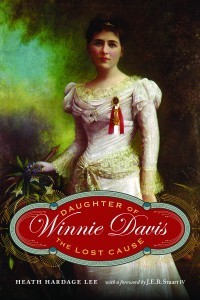
Winnie Soon to Make Her Debut!
November 22, 2013
Special Edition Friday Blog with NYC Filmmaker and Author, Jennifer Lyne!
This Friday, I have a very special guest blogger: my dear friend from St. Catherine’s School-author and film-maker, Jennifer Lyne! Jennifer and I have known each other since age six-we bonded as little girls in Virginia over our mutual love of ROCKS. That’s right, we were both rock hounds and spent many crisp fall and spring weekends hunting for gems in Amelia County, Virginia. (Maybe this is why I love JEWELRY so very much!) We both have also always loved to read and write. And now ironically, we are both authors! Jennifer’s AMAZING novel, Catch Rider was recently published and has gotten rave reviews.
Here is what Kirkus Reviews has to say about Jennifer’s debut novel: “Powerful writing propels a well-plotted horse story in Lyne’s impressive debut…Everything comes together here-setting, dialogue, horse details and, most impressively, voice-so that the near-fairytale ending works; like the rest of the book, it feels absolutely true, a standout.” (Starred review).
Jennifer very kindly agreed to be my guest blogger today on a subject ALL writers want to know more about once their manuscript is finally done: PR and Marketing. I hate to tell you this my friends, but if you have not already figured it out, writing the novel, or the nonfiction book is JUST THE BEGINNING of the work!. You will essentially be running your own small business as you get into the promotional part of your soon-to-be published masterpiece. Read on for my good friend Jennifer’s sage advice as she has been there, done that already!
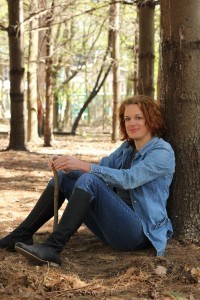
Jennifer Lyne: Famous NYC Author, Film Maker and Childhood Friend of Heath's!
Eleven things every first-time author should know about marketing their book, but no one will tell you!
By Jennifer Lyne
If you’ve gone out on a limb to write a novel (and who hasn’t?), you might not be able to see your first published work as a learning experience. You also can’t assume it’s the beginning of a long literary career. When people tell me that Catch Rider is just my first book, so don’t worry too much about how the marketing goes, or how it sells, or what the reviews are like, my thought is always that I could get hit by a bus and this could be my first, last, and only book. Or I could decide to do something else. Or…anything could happen. To me, it seems delusional to assume that any book is the first of many. I write one sentence at a time and hope for another one.
Not many agents, editors, marketing managers or publicists will tell you what I’m about to, for various reasons. Many of them don’t want to admit that the business is changing so quickly that they don’t have answers. Many of them are so focused on the quality of the work that they think it’s enough. All of them want to support you and help sell your books, but they’re facing a marketplace that’s changing in a daunting and difficult way. I’m lucky to have an agent who is always honest with me about what she understands, and what is a mystery to her, and I’m lucky to have a publishing house that is established and experienced. Nevertheless, there are things I wish I’d known. Eleven, to be exact.
Disclaimer: If you are still writing, read no further. It will only distract you from making the work as great as possible, which is more important than anything that follows.
1) Ignore people who tell you not to worry your pretty little head about marketing. This is the 21st century, and things have changed.
2) Start getting a list together of bloggers who can write about your book about eight months before the publication date. These can be highly trafficked blogs or small ones that fit your subject. You might just have a good feeling about the blog, or like the voice. But start finding them now, engage with them, be respectful and friendly. Hearing from authors is fun for them, and they’ll almost always respond with enthusiasm. One way to research blog rankings is to use Alexa.com and see how many unique views a site has and how many other sites link into it.
3) Not every blogger can actually review your book, because they’re busy. Most of them have full-time jobs. If they can’t review the book, offer a guest post (but make sure you don’t schedule all of your guest posts at the same time, like I did). Try to schedule two or so a month so that you have time to put into them and can properly copyedit them. Which leads me to number 4:
4) Make sure your guest posts are as copyedited as possible. Some bloggers will thoroughly edit them, and some just don’t have time. Don’t find this out the hard way by having a messy piece of writing land on the Internet just hours after you emailed it.
5) Have someone you know get into a PR database like Cision (any hackers in your family? PR interns?) and find the names of book reviewers and editors in your target media outlets, including their influencer ratings. Since my book is about the horse world, I researched media outlets in the horsiest areas of the country. This left me with a 130-page Excel spreadsheet. The publicity assistant who works with me offered to send hardcovers to 50 of those, so I spent a week whittling the list down. I wrote all fifty individual handwritten cards respectfully asking them to read and review my book. These books are going out now, so I don’t know how this is going to work, but I’m optimistic.
6) Ask your marketing department for a meeting six months before your publication date. They might not give it to you, but ask anyway, ask again, and again, and have your agent ask. It’s the least they can do. Face-to-face meetings are much better than email and even phone calls.
7) Blurbs. No matter what anyone tells you ahead of time, you are responsible for getting them. I sensed a lot of ambivalence about blurbs from people who know (editors, agents, etc.) and I was told they can be rather transparent; it can be obvious that someone called in a favor. Also, if you ask for them, do so well before your first printing, at least six months. I thought the cover of the book could be easily updated to add a blurb or a review – not so.
 Pick your battles. Let some things go. Choosing which issues to let go is the tricky part, and you’ll have to use your own judgment. Don’t cave on the cover of the book. If you don’t like the cover of your book, they need to change it until everyone is happy with it. “Everyone” means you, the editor, marketing, and your agent.
Pick your battles. Let some things go. Choosing which issues to let go is the tricky part, and you’ll have to use your own judgment. Don’t cave on the cover of the book. If you don’t like the cover of your book, they need to change it until everyone is happy with it. “Everyone” means you, the editor, marketing, and your agent.
9) Understand that there are times your marketing department might think you are a pain in the arse. Make up for it by being kind, and respect the fact that they are working hard. Take care of them and treat them well.
10) Never ever ever forget—this is YOUR book and it represents a lot of sweat, tears, days when you’re writing and ignoring other responsibilities. Most importantly: it’s a risk you decided was worth it.
11.) After I wrote this, I hired a publicist. I thought I had to have $20 K set aside to do that, but I found someone who took it on as a passion project and accepted much, much less. How did this happen? I complained at a party about my lack of understanding of marketing within earshot of the right person, who works in branding. He introduced me to another friend in PR and branding who also rides horses and has written horse books. My takeaway from this-and I am not kidding-is to go to parties and complain LOUDLY! Not in a “sinking ship” kind of way, but in a “gosh I wish I knew someone who could (fill in the blank)” kind of way. There is a big difference between whining and saying loudly what you need. Learn to do the latter, and you will find people right next to you can have exactly what you need. And then you can help them too.
-Jennifer Lyne is the author of Catch Rider and Co-Founder of Sharpshooter Films. She lives in NYC with her husband and two sons. Check her work out at:
-HHL
November 18, 2013
Shootout at the Ok Corral in Des Moines!
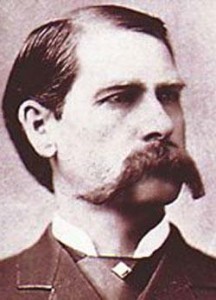
Wyatt Earp-Frontier Hero or Western Thug?
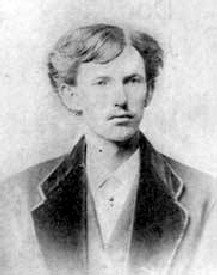
Doc Holliday the Not-So-Deadly Dentist
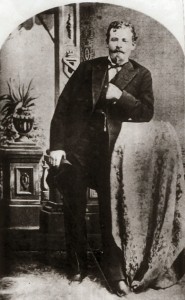
Ike Clanton: Cowboy and Coward
This past Thursday, November 14th, I had the privilege of hosting New York Times bestselling author (in both fiction AND nonfiction!) Jeff Guinn here in Des Moines as part of the Salisbury House & Gardens History Series. Jeff was here to talk about his nonfiction book, The Last Gunfight: The Story of the Shootout at the O.K. Corral-And How It Changed the American West. I am the Coordinator of the History Series, and one of the most exciting aspects of my job is that I get to hang out with fascinating writers like Jeff and learn about how they work and think about their biographical subjects.
Jeff is a real Southern gentleman who now lives in Fort Worth, Texas. He grew up all over the world, in places like Italy, Germany and England, so he has a very broad world-view and an abiding curiosity about history that is contagious. His approach to many of his nonfiction books has been to take an iconic figure and use them as a window into a particular era or decade. For instance, Jeff just published The Life and Times of Charles Manson (Simon & Schuster, August, 2013). Manson provided Jeff with a window into 1960′s counterculture. Next up for Jeff is a biography of Jim Jones, the cult leader who instigated the Jonestown Massacre in Guyana in November of 1978. Jones will be a conduit for Jeff’s take on the groovy decade of the 1970s.
For our Thursday night talk here at Salisbury House though, we went even further back in time to Tombstone, Arizona, on the night of Wednesday, October 26, 1881. Here on the Western frontier, we got to meet the famous Earp brothers; tubercular dentist and gambler, Doc Holliday; and Earp’s soon-to-be common-law wife Josephine. We also encountered the cowboys who ended up on the wrong side of the Earps’ guns in the Shootout at the O.K. Corral.
Only the Shootout wasn’t at the O.K. Corral-it was in an empty lot NEAR the O.K. Corral! And the Earps and their gang were not necessarily the All-American heroes that history has decided they were. Wyatt himself was actually kind of a thug who had worked as a bouncer in a brothel and had broken the law numerous times in the past. Doc Holliday was an amazing dentist but a horrible shot with an even worse temper. And Wyatt’s girlfriend then wife Josephine while beautiful was a real pain in the you know what. (See Ann Kirschner’s wonderful new book on Josephine: Lady at the O.K. Corral: The True Story of Josephine Marcus Earp for more on her.)
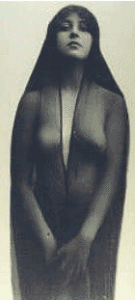
Exotic Josephine Marcus-later Josephine Earp
What Jeff did so well during his sold-out evening talk at Salisbury House was to deconstruct one of the most American of myths: the gilded tale of the Western frontier and the men and women who lived there. Iconic figures like the Earps and Doc Holiday were not wholesome, all-American boys intent on upholding frontier justice. They were all out to make a name for themselves, to make their fortunes and their reputations by any means necessary. To quote from Jeff’s book, “What has come to be known as ‘the Shootout at the O.K. Corral’ became a pivotal moment in American annals because misunderstandings, exaggerations, and outright lies about it provided impetus for future generations to form a skewed, one-dimensional view of frontier history.”
Jeff also made time last Thursday to talk to Des Moines Public Schools Central High students studying A.P. American History. The savvy author won their attention immediately by mentioning that hip actor/producer/cartoonist Seth MacFarlane had tweeted favorably about The Last Gunfight. After luring his audience in with this pop culture tidbit, he taught them a real history lesson regarding the events at the O.K. Corral. ”Cowboy” was actually a negative term in Tombstone in 1881. Many of the cowboys were Southerners who had come West looking for freedom from the federal government after the Civil War. They did not want ANYONE telling them what to do or limiting their gun usage. (Being a Southerner myself, I don’t think things have changed a whole lot regarding these views since 1881.) The Earps were on the other side of the fence, supposedly trying to enforce gun control laws set down by the upstanding citizens of Tombstone. But they also had their own hidden agendas and motives that were not entirely pure.
Jeff summed it up by noting that the Tombstone episode still “defines political debate today.” As he pointed out to the Central High School students, issues of gun control, government control, taxes, and the right to bear arms are still hot button issues NOW.
And to think, according to Jeff Guinn: ”It all started in that empty lot in Tombstone.”
-HHL
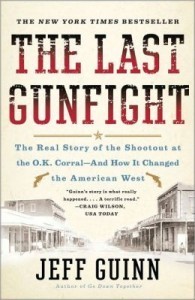
the Last Gunfight by Jeff Guinn
November 8, 2013
Pilgrimage to the Holy City
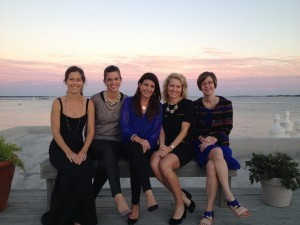
I have recently returned from a visit to the Holy City.
No, I am not talking about Mecca (my hometown of Richmond, Virginia)-I am talking about Charleston, South Carolina. The city is so named due to the plethora of church steeples dotting the skyline. This hospitable and picturesque town also has a well-earned reputation from its earliest days for religious tolerance.
Charleston was just named the top tourist destination in the U.S. for the third consecutive year by Conde Nast Traveler magazine. My dear friend Caroline Fitzgerald, a native Charlestonian, was kind enough to invite me and three other lovely Des Moines divas-Amanda Reynal, Jenny Ferrari and Kellie Hockmuth-home with her for a long weekend. Caroline was the quintessential Southern hostess, escorting us all over the city to see the sights. We also ate at fabulous local restaurants like F.I.G., Rarebit and McIntosh. Caroline’s delightful parents, Alfred and Julianna Pinckney put us up in their wonderful carriage house, and entertained us royally at their lovely and historic home.
Julianna showed me the most interesting article from the Charleston Post and Courier during our stay. Apparently 150 years ago to the day of our visit, Jefferson Davis, Winnie’s father, also visited the Holy City. On November 2, 1865, the Confederate President arrived in Charleston via train and spoke from the portico of City Hall about Charleston’s contributions to the founding of the U.S. and their role in the secession movement. Unlike our Des Moines group though, Jefferson was surrounded by some of his worst political and personal enemies during this visit. Apparently, he did not enjoy the famous Charleston hospitality that we did!
The highlight of the trip for me was the amazing walking tour we took of the Historic District. The excursion was led by Caroline’s old friend Tommy Dew. (Tommy also happens to be a high school friend of mine from Richmond!) Both Southern Living magazine and Darius Rucker of the famous Hootie and Blowfish band have deemed Tommy’s tour the BEST in Charleston! Check his tours out at www.onthemarkettours.com We all learned so much from him about this amazing town and its history from its founding, to the Civil War, and also about what Tommy called the city’s “hundred year sleep” after the War until the construction of major highways resulting in an increased tourist industry woke Charleston up in the late 60s and early 70s.
Tommy’s tours meet at the Confederate Museum on the corner of Market and Meeting streets. The Museum is owned and operated by the Charleston Chapter #4 of the United Daughters of the Confederacy. Since Winnie is known as “THE Daughter of the Confederacy,” I had to check that out! Not much about Winnie there though aside from one portrait-the small space is filled with Confederate military artifacts. If you are into that sort of thing they do have a fabulous collection, and the building itself is gorgeous (built in 1841 pre-war) and known as “Market Hall.”
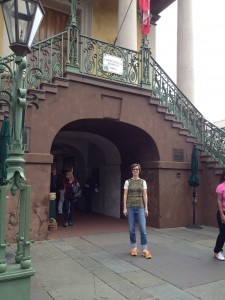
Confederate Museum or Market Hall
I was also able to visit the Edmondston-Alston House on East Battery Street. My daughter is named Anne Alston after the Alston branch of our family, so this was a must see for me! the docents there are so knowledgeable, and the house is full of antiques and art. The Alstons were rice planters and apparently big time shoppers and art collectors. Hmm, now I know where I got that DNA from! Check the house out at www.edmondstonalston.com
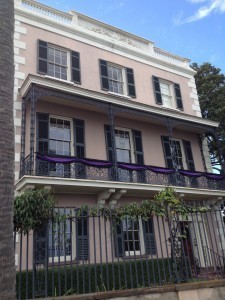
Edmondston-Alston House
Speaking of SHOPPING, Caroline also took us to King Street where all the good boutiques reside. Make sure you bring your credit cards! I got these camo smoking slippers as a souvenir. Even though they are from NYC store C. Wonder, (recently opened on King Street,) I find them SO Garden & Gun! My husband Chris who loves to tease me about my shopping habits told me they looked like something Uncle Si would wear on Duck Dynasty-but I am just not listening to him on that one!
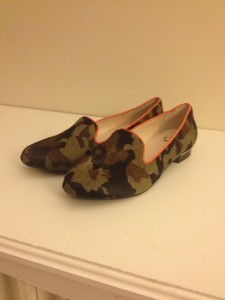
Garden & Gun Style from King Street
We wrapped up our delightful trip Saturday night with a fabulous cocktail party on the rooftop of a gorgeous home on the Battery. (Pictured in photo at top of this post). It was surreal to enjoy wine at sunset looking across Charleston Harbor to Fort Sumter. The first battle of the Civil War was fought there on April 12, 1861. Confederate forces bombarded the Union-held Fort, forcing the Union commander to surrender and evacuate the next day.
I do not have a record of Winnie visiting Charleston, though it is likely she may have. She would have fit right in with our group, and she would have enjoyed the sunset on the Battery and the local history as much as I did. However, I don’t think she would have approved of my new camo shoes!
HHL
Ps. Credit is due to my friend Lavan Green, who reminded me where the True Mecca lies!
October 24, 2013
Winnie on Wikipedia!
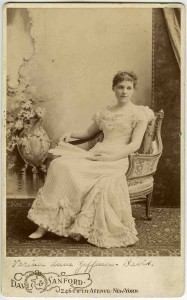
Courtesy of the Valentine Museum, Richmond, Virginia
This week, I received some excellent advice from two biographer friends. Update or create an entry for your biographical subject on Wikipedia! This is a great way to let readers know that you are the expert on a particular biographical subject. I spent a few hours this week updating the pre-existing “Winnie Davis” Wikipedia entry. Though some of the facts of her life were correct, a number of important details were not. For instance, Winnie did not die of “malaria” but of “malarial gastritis” which was a broad nineteenth century diagnosis for stomach ailments. She did not die in a friend’s home, as the former entry noted, but instead she died at the Rockingham Hotel, a famous resort of the period in Narragansett, Rhode Island. Etc etc….
Wikipedia is a wonderful tool but it is not always 100% correct. So caveat emptor: one cannot live by Wiki alone when doing research! Unless of course you are looking at the Winnie Davis entry, which will then lead you to my definitive work on the subject!
In any case, now you can read the FASCINATING AND ENTIRELY TRUE TALE of Winnie online written by Heath Hardage Lee, World Winnie Expert, both on my website and NOW on Wikipedia!
https://en.wikipedia.org/wiki/Winnie_...
HHL
October 17, 2013
Winnie’s Literary Lifestyle in New York
In 1890, Winnie and her mother Varina moved to New York City where they both pursued literary careers. The mother-daughter pair worked for The Sunday World newspaper, run by family friend and famous newspaper baron Joseph Pulitzer. Winnie wrote short fiction, sketches, book reviews and verse. Varina, wrote nonfiction that often recalled her days at the First Lady of the Confederacy. During this time, Winnie also wrote two well-received novels as well as magazine articles for publications such as The Ladies Home Journal. The two women lived in several residential hotels during their time in NYC. By 1893, they had moved to the Gerard Hotel at 123 West 44th Street in what is now the Theater District. Today, this beautiful hotel still remains, but it has recently been converted into a hip extended stay luxury hotel-the Hotel AKA Times Square. (www.stayaka.com) According to the AKA hotel website, the imposing façade was originally designed in a late Romanesque Revival manner, deriving its architectural inspiration from German sources. Winnie spent most of her teenage years in German boarding school, where she became acquainted with all aspects of German culture, including German architecture. Was this the reason she was drawn to this particular hotel? A wonderful French bistro, Café Un Deux Trois is located on the first floor of the Hotel AKA. (www.cafeundeuxtrois.com). I ate a lovely dinner there one night with a biographer friend who had figured out that THIS was the old Gerard lobby space! As I write in Winnie Davis: Daughter of the Lost Cause, Café Un Deux Trois is always “packed, filled with chic urbanites headed out to the latest Broadway show.” This same friend was kind enough to send me some photos of the newly redone hotel-recently revealed from under its renovation wrappings. What was old is new again, and it is still part of the NYC landscape more than 120 years after Winnie and Varina first moved to the city. 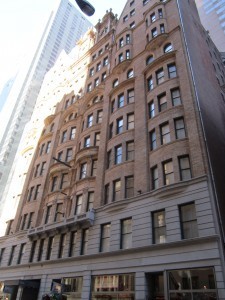 I think Winnie, who was such a fan of New York, would be pleased to see the Gerard Hotel- today the Hotel AKA-thriving and adapting to the times while still retaining its original façade. I know she would also enjoy dinner at Un Deux Trois. Winnie spoke French fluently, so she would be quite at ease here in her old hotel lobby eating foie gras and sipping Sancerre!
I think Winnie, who was such a fan of New York, would be pleased to see the Gerard Hotel- today the Hotel AKA-thriving and adapting to the times while still retaining its original façade. I know she would also enjoy dinner at Un Deux Trois. Winnie spoke French fluently, so she would be quite at ease here in her old hotel lobby eating foie gras and sipping Sancerre!
October 10, 2013
Winnie Artifacts and Historical Memory
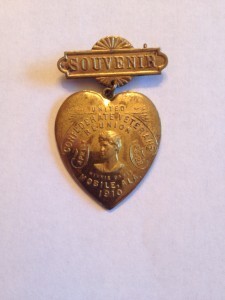
United Confederate Veterans Reunion Mobile, Alabama 1910
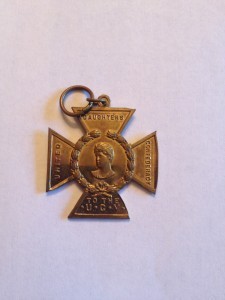
United Daughters of the Confederacy/United Confederate Veterans Medal
Yesterday I talked with my friend Leah Witherow, who is Curator of History at the Colorado Springs Pioneers Museum. (www.cspm.org). I met Leah when I was researching Winnie’s visit to Colorado Springs to see her older sister Margaret in 1894. Local papers still identified Winnie as “the Daughter of the Rebellion” during her visit-29 years after the Civil War ended.
Leah and I were talking about one of her current exhibits and the emotional impact artifacts had upon visitors. One of Leah’s quotes really struck home with me:
“Objects are powerful containers of memory that help us connect with our personal history, faith, cherished traditions, milestones, accomplishments, family heritage and our loved ones both living and deceased.”
Her comment is so wise. That is why curators, historians and antique collectors flock to Civil War artifacts. There is a huge market for these items, as I found out when I started looking for Winnie Davis-themed mementos. Historical memory is a powerful force, and one that can still resonate through objects hundreds or even thousands of years after events occur.
My friend Chris Ferguson is the author of several Civil War books (check out Southerners at Rest) and the premier tour guide at Hollywood Cemetery in Richmond, Virginia. Chris located several Winnie Davis-themed ribbons and medallions for me. These medallions were distributed at both Confederate Veterans Reunions and United Daughters of the Confederacy events.
As I write in Winnie Davis: Daughter of the Lost Cause, “Post-war Confederate Veterans were continually trying to make sense of what had happened to them, to come to terms with their crushing defeat. They needed an icon to cling to, someone to guide them through the choppy and unknown waters of Reconstruction forward.” Winnie became this icon. These medals, ribbons and images of her face are “powerful containers of memory” that signal Winnie’s significance as a secular Saint of the South
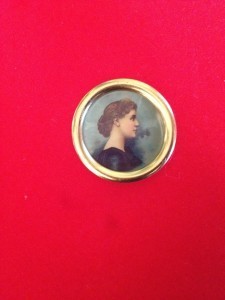
Contemporary Winnie button Memorial Hall New Orleans
October 1, 2013
Inaugural Blog, October 1, 2013
“A Woman’s Place” will start our explorations with Winnie, but it will not end with her. Consider my blog a gathering place, a shelter, a refuge for female rebels, renegades, and those who just don’t fit into the “ladylike” mold. Society has tried for years to put these strong, smart women “in their place.” But they have defied convention since history began.
My upcoming biography of Winnie, Winnie Davis: Daughter of the Lost Cause (out April 1, 2014 from Potomac Books,) explores the life of the youngest daughter of Confederate President Jefferson Davis and his second wife, Varina. As I write in my new book, Winnie “sat on the fence between Victorian repression and fin-de-siecle rebellion against traditional women’s roles.”
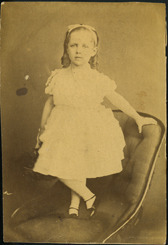
Winnie as a little girl, courtesy of Museum of the Confederacy, Richmond, Virginia
Born in 1864, Winnie was a link between Old South and New. Though she seemed to be the ideal woman of the “Lost Cause”-she herself displayed a subversive streak that made her more complex and interesting than the simple Southern sweetheart she played onstage at Confederate veterans’ reunions.
She was a secret rebel…and that is why I find her totally fascinating.
Together, we will explore these women and their place in society through events, food, fashion, books and art-my inspiration might come from anywhere!
Heath Hardage Lee (HHL)
Heath Hardage Lee's Blog
- Heath Hardage Lee's profile
- 94 followers


